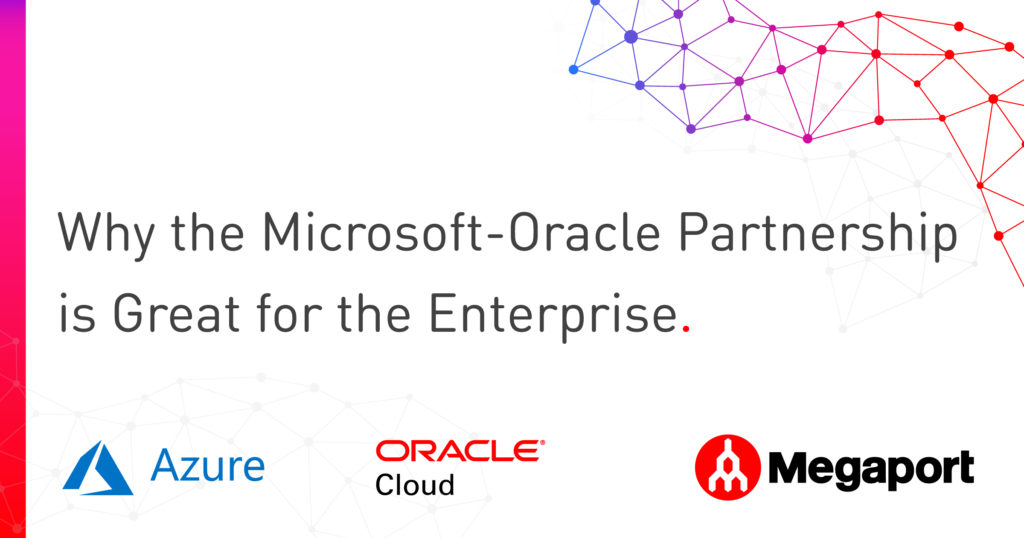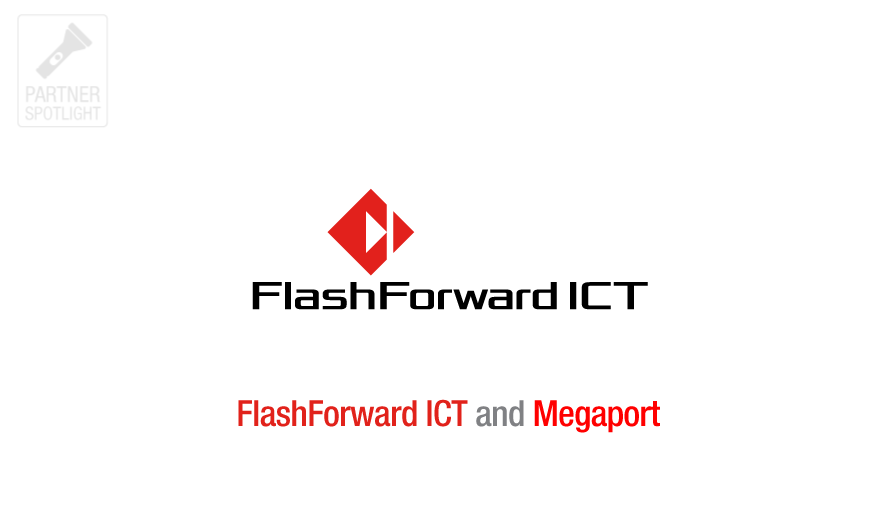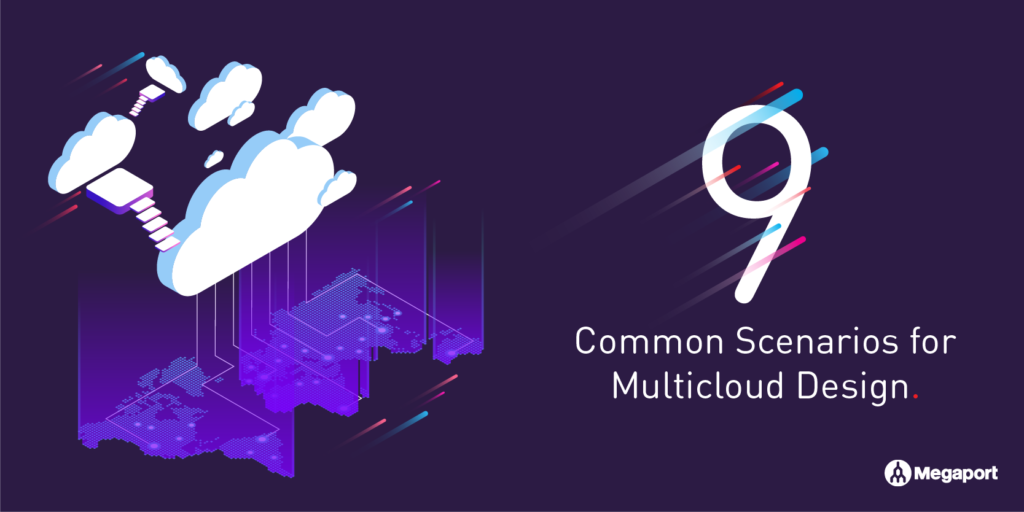
Why the Microsoft-Oracle Partnership is Great for the Enterprise
- June 24, 2019
- RSS Feed
Exploring the cloud interoperability partnership between Microsoft and Oracle, its benefits to enterprise customers, and what it means for Megaport.
As the cloud continues to expand and develop, organisations are becoming increasingly more empowered with the tools they need to optimise day-to-day workloads as well as innovate to stay ahead of the game. Microsoft and Oracle Cloud recently announced a cloud interoperability partnership enabling businesses to run one part of a workload within Azure and another part of the same workload within Oracle Cloud – giving them the ‘best-of-both-clouds experience’. This is a huge step forward in advancing the way cloud technologies work together to meet the demands of their customers. We’ll break down the complexities leading up to this partnership and give our insight into how it will be valuable for the enterprise – as well as what it means for Megaport customers.
How the introduction of the cloud affected enterprise licensing agreements.
Before the cloud was accessible in mainstream business in the way we know today, within the world of applications, a three-tier system was available which comprised of a web/presentation tier, an application tier, and a database tier. The web/presentation and application tiers were created using the Windows operating system, in most cases leveraging remote desktop services, a virtual desktop, and managed with a Citrix layer. Back when the database tier was something of choice for the enterprise, Oracle was the major powerhouse in this space with 150,000 customers and most, if not all, Fortune 500 companies within their portfolio.
In the world of on-premises deployments, customers were subject to the following agreements:
- Enterprise licensing agreements – This cost would be spread across the first three years, at which point the customer would own the license and could use it in their data centre indefinitely.
- The product’s use rights – This would dictate the way in which a particular product could be utilised.
- Software Assurance (SA) – This provided the customer additional support, planning, training benefits amongst other things, and was an indefinite payment or until the customer decided they no longer needed the additional benefits.
Microsoft, Oracle, IBM, and many enterprise software companies used this licensing model as a best practice model. When cloud compute and storage came into play, along with the enterprise software companies offering this new technology, a solution was needed for large enterprises transferring their existing licensing investments into cloud usage.
Microsoft decided to make this a benefit within Software Assurance, meaning that if the customer had SA, they could have license mobility rights. The caveat to this, however, was that not all products’ use rights allowed for that mobility to move outside of Microsoft Azure. A popular example is Windows. Oracle made a similar move with their Database software.
The complexities of moving legacy applications into the cloud
If you look at verticals such as Healthcare, Finance, and Manufacturing, you’ll find a disproportionate number of ‘legacy applications’ that require Windows licensing and run Oracle Databases. When organisations start to explore the cloud as a way to leverage efficiencies, they quickly find that they’re unable to leverage a single cloud because of the software licensing and use rights that support their legacy applications – and the only way to leverage the cloud would be with a multicloud model, or by giving legacy apps major code rewrites. Usually, this would involve rewriting at the presentation tier to enable this to work with a web-enabled presentation layer, and would cost millions of dollars in resources, testing, etc. At the same time, this scenario is not ideal for Microsoft.
The other option is ‘lifting and shifting’ the organisation’s databases which literally involves moving them over into the cloud and making them work with the platform. However, this is a far more complex process for the enterprise, and is often a massive expense, requires the complete re-training of technical staff, and takes too much time. Also, this scenario is not ideal for Oracle.
So, the outcome for most legacy applications is that they don’t move to the cloud. This is completely arbitrary, created by software companies licensing models that are designed to protect against churn.
The benefits of the Microsoft-Oracle partnership for the enterprise
Microsoft and Oracle’s cloud interoperability partnership provides organisations running legacy applications with a supported solution by both cloud providers to begin partitioning the application stack. Put simply, customers can now take Windows to Microsoft and the Database to Oracle over ExpressRoute and Fast Connect, opening up cloud adoption to some of the most monolithic legacy applications. Cloud interoperability makes hybrid multicloud operations much easier to set up and manage between leading cloud providers – and removes the high costs and complexities associated with trying to make two clouds work together for day-to-day business.
What the partnership means for Megaport customers
Optimised hybrid multicloud environments using Microsoft and Oracle require a foundation of high-performing, secure connectivity to Azure and Oracle Cloud. The ability to easily leverage Windows in Azure and Database in Oracle Cloud is a massive benefit to enterprise organisations, and Megaport can further enhance this for those customers who still need to use on-premises infrastructure and require a Layer 2 connection between their data centre and Azure and Oracle Cloud. If customers are hoping to use this new partnership to limit the on-premises infrastructure they are using, Megaport Cloud Router is also a great service to virtually route between Microsoft or Oracle and the other clouds in their portfolio in a direct, scalable, and flexible way.
Removing the complexities of moving legacy applications, and simplifying the use of ‘mix and match’ cloud services, the new Microsoft and Oracle partnership will make enterprise business easier on many levels. Megaport connectivity can complement these solutions to further optimise hybrid multicloud strategies and enable a higher performance when it comes to mission-critical workloads. Feel free to reach out to us for best practices when it comes to spinning up these strategies.


